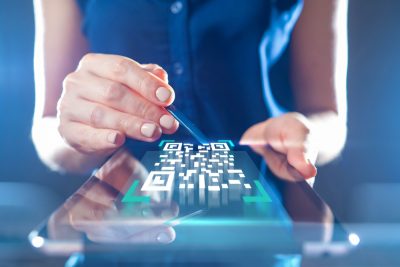Last January, the Spanish Ministry of Finance made mandatory the submission of the VAT return paperwork only through the Internet, eliminating the possibility of doing so directly in person in the Tax Agency offices. With this measure, the government is complying with a legal change affecting all the Eurozone countries and which requires self-employed workers and all those individuals issuing invoices for any activity to file the declaration online.
As we see, more and more paperwork we need to manage our business has to be done electronically. For this reason, we wanted to dedicate a space to present the basic principles of the electronic ID card, essential nowadays to perform any administrative procedure via the Internet.
Basic concepts
As it is well known, the so-called electronic ID (eDNI in Spain) replaces the traditional identification card. The new e-card includes a chip which enables us to prove our identity through electronic means and sign electronic documents with full legal validity. It is important to know that the eDNI doesn’t contain any personal data beyond the information already included in the traditional DNI. However, it does feature the citizen’s digitized picture, fingerprint and signature, along with the certificates of authentication and electronic signature. The chip is designed complying with safety standards, and no information can be extracted from it. For this reason, it is accompanied by a PIN only known by the owner and which is the key to use the card.
The electronic ID allows us to do all sorts of administrative procedures in public agencies and private companies. It is possible, for example, to access our Social Security data, access the e-office of our bank, sign electronic documents with the same validity as a handwritten signature (even in those documents that need to be signed by several people) and also present a VAT return declaration to the Tax Office. With the eDNI it is even possible to maintain a chat conversation with the total security of knowing who we are talking to. Overall, the eDNI ensures that an individual is identified, it guarantees that the information we provide can’t be changed and that the signer of a document can’t deny having done so.
How to sign documents
Nowadays documents can be signed in two ways: on the one hand, on the Internet, through a plug-in installed in your browser, and on the other hand, using specific programs or applications.
A document signed electronically can be generated in various formats. The most common ones are CAdES, XAdES, PAdES, OOXML and ODF. Their names are not easy to remember and may be all Greek to you, but here we give you a brief explanation about each format, as it is important for you to know them:
– CadES: It’s the evolution of the first standardized format signature. It is appropriate to sign large files, especially if the signature contains the original document, because it optimizes the information space. The problem is that after signing you will not be able to see the final information, because it is stored in binary form (unless you use an external program created especially for this purpose.) A good point in its favor is that the documents signed electronically can remain valid for a long period of time.
– XadES: It generates an XML text file, a format very similar to HTML which uses tags. The documents obtained tend to be larger than in the case of CAdES, so it is not recommended when the original file is very large. Applications like eCoFirma, from the Spanish Ministry of Industry and Trade, only sign in XAdES.
– PadES: This is the most appropriate format when the original document is a PDF. The recipient of the document can easily check the signature and the signed document. With the above formats this is not possible without using external tools.
– OOXML: This is the format generated by Microsoft Office documents.
– ODF: Only for OpenOffice.
On the other hand, you have to keep in mind that depending on the application or program used to sign you may be able to choose one of these formats (as it is the case of @ Firma). In other cases the applications will impose always the same format (i.e. eCoFirma), and others will decide automatically the format depending on the document to sign (i.e. @ FirmaFácil).
Finally we want to highlight another feature of the eDNI: the fact that several people can sign electronically the same document. There are three main types of electronic signature:
-
Simple signatures: with a single signer.
-
Co-signature: a multiple signature in which all signatories are at the same level and where it doesn’t matter the order in which they sign. It is normally used to sign documents resulting from meetings, conferences or committees.
-
Counter-signature: a multi-signature in which the order of who signs is important, as each signature must endorse or certify the previous one.
@Firma and eCoFirma allow the three types of signature, so the user can choose what he prefers in case of multi-signatures. The FirmaFácil application, however, selects automatically the co-signature format when it detects a previously signed document.









